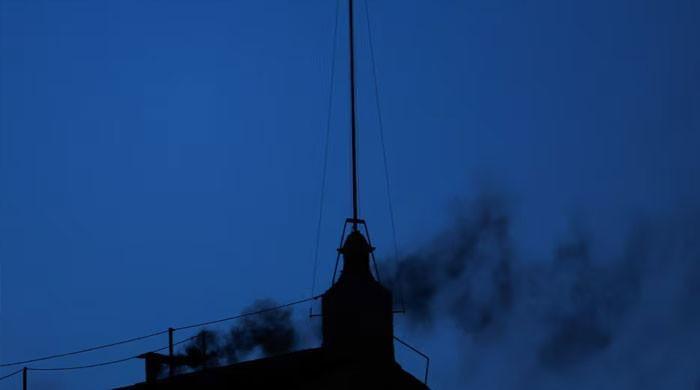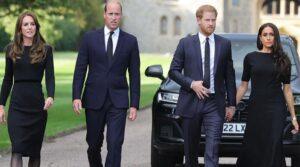- The cardinals took secret oaths before the start of the conclave.
- The vote takes place in the Sistine Chapel, cut from the world.
- Progressive and traditionalists compete for supremacy.
The black smoke was obtained from the chimney of the Sistine Chapel on Wednesday night, pointing out a first non -conclusive vote of the cardinals locked in the Sistine Chapel in a conclave to choose a new Pope to guide the Roman Catholic Church.
Thousands of faithful gathered in the Plaza de San Pedro hoping that the smoke is poured from a narrow chimney on the roof of the chapel at the end of a rich day in ritual and boato, with prelates praying for divine guidance in its secret vote.
The crowd had to be patient, since it took more than expected to appear the smoke, more than three hours after the start of the conclave. This was an hour more than what was needed to see smoke after the first vote in the 2013 conclave that chose the late Pope Francis.
When a Pope is chosen, white smoke will emerge, but this was not expected on Wednesday: a pontiff has not been chosen the first day of a conclave in modern times.
However, some cardinals said this week that they expected to conclude on Thursday or Friday to show that the Church can remain unified after the 12 -year divisive papacy of Francis, who died last month.
The 133 cardinal voters, all over 80, will spend the isolated night in one of the two guest houses in the Vatican, where they can continue their deliberations in a more informal environment before returning to the chapel on Thursday morning.
After Wednesday’s only voting round, the “Princes of the Church” of Red Hat will have two votes in the morning session and two in the afternoon, continuing in the next few days until a man has secured the majority of at least two thirds, 89 cardinals this time.
His only communication with the outside world will be the smoke of the fireplace while they burn his complete ballots mixed with special chemicals, black when a voting session ends without results, white when a pontiff is chosen.
Modern papal arrangements are typically short. The 2013 conclave lasted only two days, also in 2005, when its predecessor, Benedict XVI, was chosen.
In recent days, the cardinals have offered different evaluations of what they are looking for in the next pontiff that will lead the Church of 1.4 billion members.
While some have requested continuity with Francis’s vision of greater opening and reform, others have said they want to go back the clock and embrace the old traditions. Many have indicated that they want a more predictable and measured pontificate.
‘Good of the Church’
In a sermon before the conclave, the Italian cardinal Giovanni Battista, who at age 91 is too old to participate in the vote, told his prelates that they must put aside “each personal consideration” when choosing the new pontiff and take into account “only … the good of the church and humanity.”
He also suggested that the next Pope had to respect diversity within the Church. “Unity does not mean uniformity, but a firm and deep communion in diversity,” he said.
No clear favorite has emerged, although Cardinal Italian Pietro Parolin and Cardinal Filipino Luis Antonio Tagle are considered the main ones.
However, if it becomes obvious that neither of them can win, it is likely that the votes change to other contestants, with the voters who possibly merge around geography, doctrinal affinity or common languages.
Among other potential candidates are Jean-Marc Aveline of France, Peter Erdo de Hungary, American Robert Prevost and Pierbattista Pizzaballa of Italy.
A record of 133 cardinals from 70 countries entered the Sistine Chapel, compared to 115 of 48 nations in the last conclave in 2013, a growth that reflects Francis’s efforts during his 12 -year reign to extend the geographical scope of the Church.
Among their considerations will be if they should look for a Pope from the Global South, where the congregations are growing, as they did in 2013 with Francis, from Argentina, or return the reins to Europe, or even choose a first Pope in the United States.
The Latin songs and organ music accompanied the cardinals while processed in the fresco Sistine chapel before the conclave began, with the representation of Miguel Ángel de Cristo that issued the final judgment dominating the 500 -year -old room.
They put their hands on the gospels, making a secret vote so as not to disseminate anything about their meeting.
Archbishop Diego Ravelli, the master of ceremonies of the Vatican, then pronounced the Latin command “Omnes extra!” (Everyone comes out!) Tell those who are not involved in the meeting to leave the room, with the heavy wooden doors of the chapel closed in the outside world.
There is not intended to be discussion in the voting sessions, but the experience suggests that there will be many covert campaigns during breaks and meals as the names of “Papili” rise and fall into successive votes.




